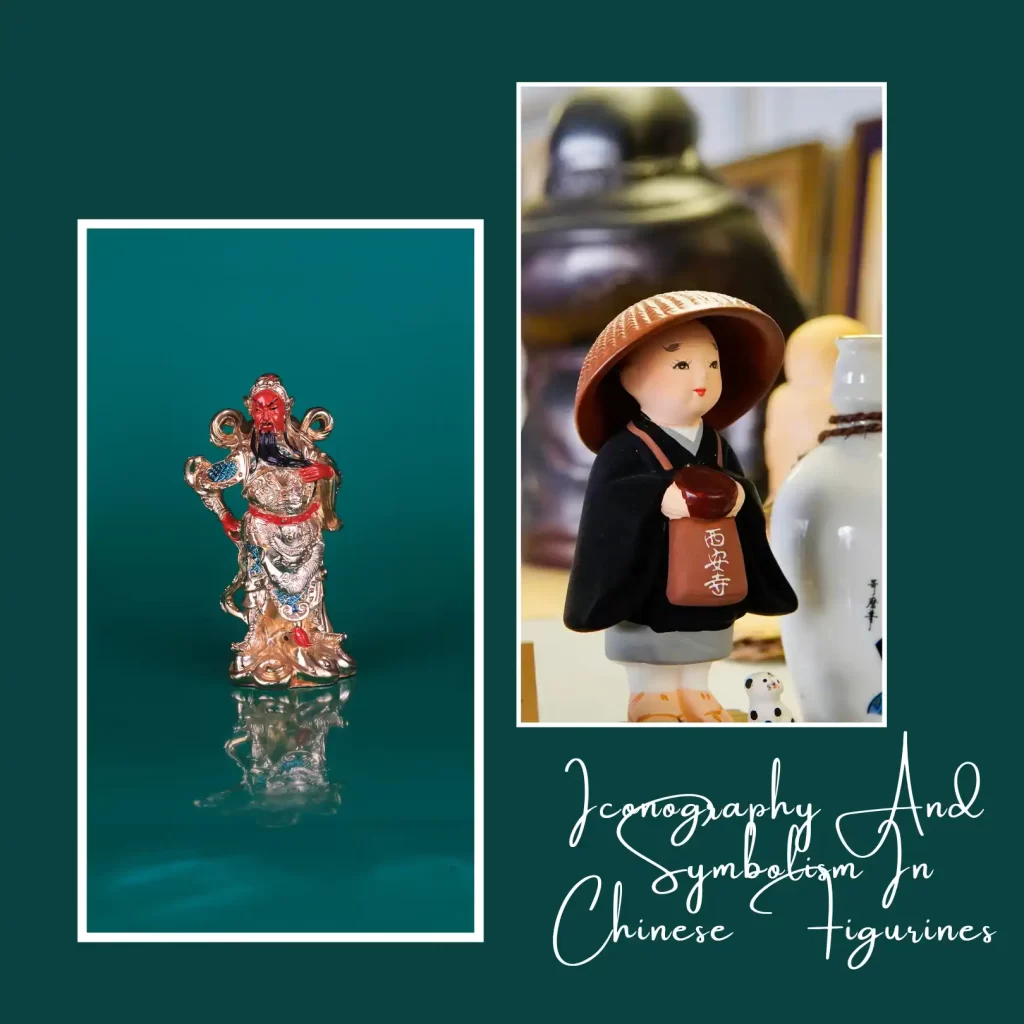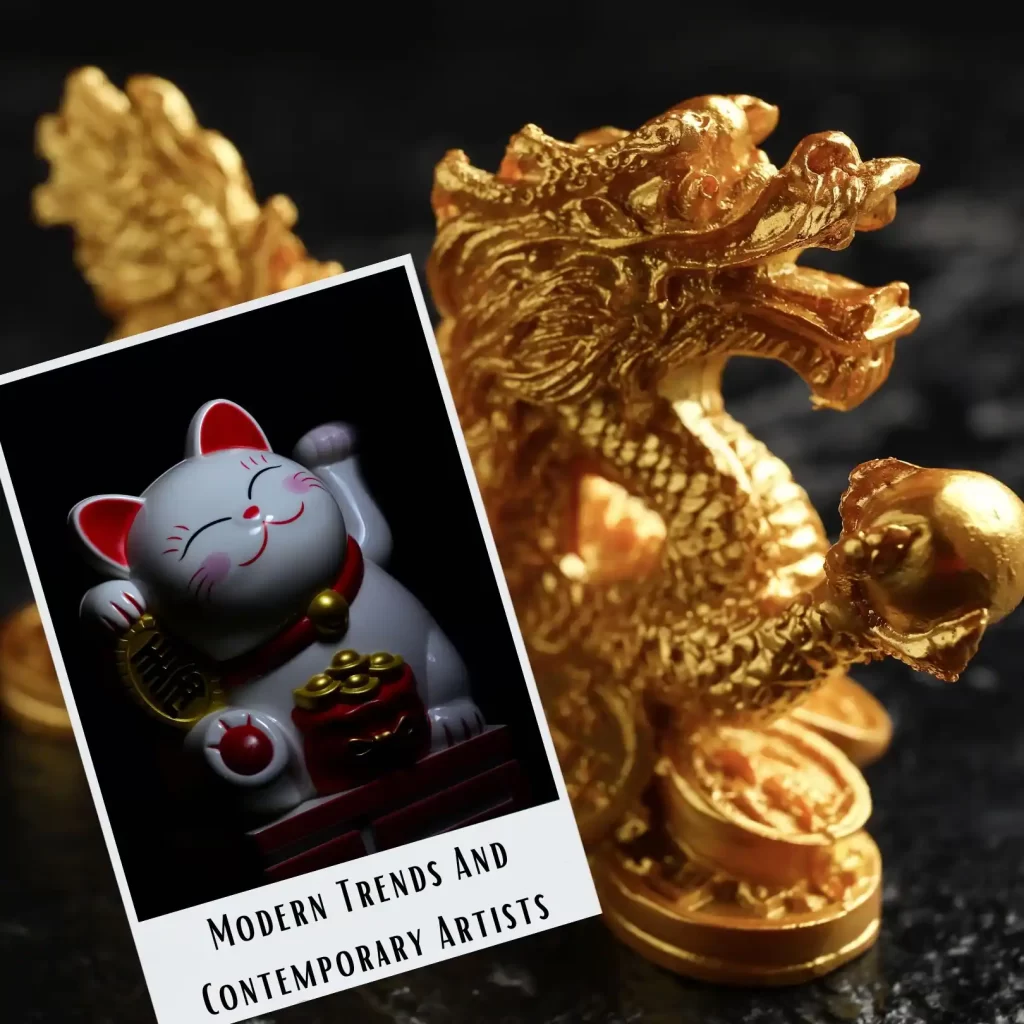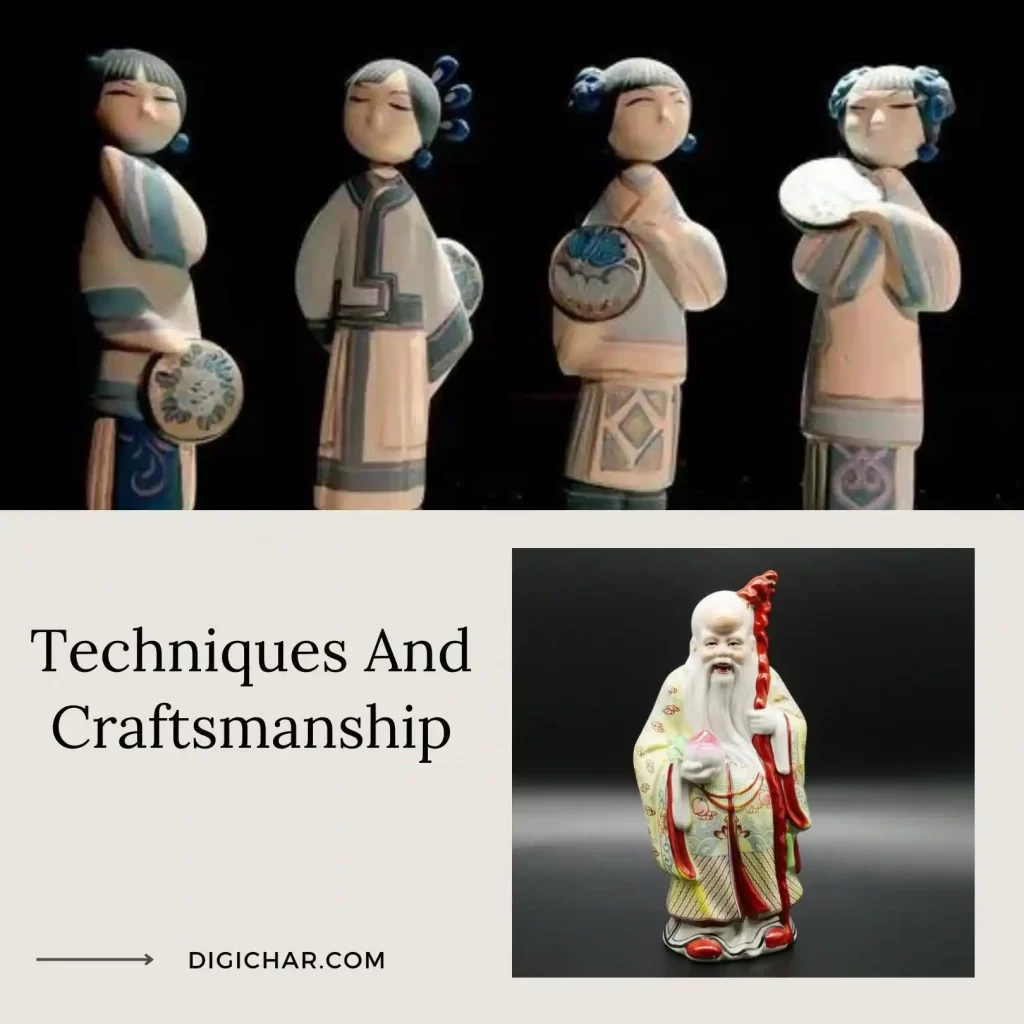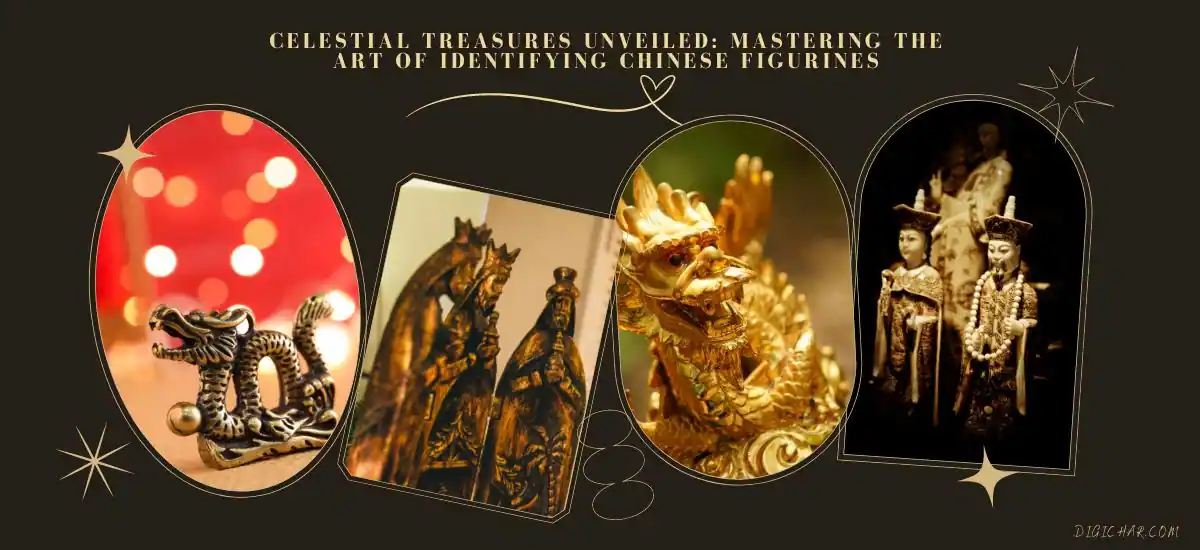Chinese figurines have long captured the imagination of people around the world, thanks to their deep historical roots and the exceptional skill evident in their creation. These miniature sculptures are more than just decorative items; they are a window into the vast and varied tapestry of Chinese culture, reflecting centuries of artistic evolution, spiritual beliefs, and societal changes.
In this both collectors and enthusiasts in mind, aiming to demystify the process of identifying these fascinating artifacts. Whether you’ve recently inherited a collection, stumbled upon an intriguing piece at a flea market, or are simply drawn to the beauty and mystery of Chinese figurines, this journey through art, history, and heritage promises to enrich your understanding and appreciation of these exquisite objects.
Iconography And Symbolism In Chinese Figurines

Diving into the world of Chinese figurines, you’ll find that each piece is steeped in symbolism and iconography, telling tales that go beyond their visual appeal. These figurines are not just art; they’re a language of symbols, each with its own story and significance rooted in Chinese culture and philosophy.
For starters, many figurines depict deities and mythical creatures, each symbolizing different aspects of life and the cosmos. The dragon, for example, is a powerful symbol of strength, good fortune, and authority, often seen in figurines meant to protect and bless a household. Similarly, the phoenix represents renewal, grace, and the harmony of yin and yang, making it a popular motif in figurines celebrating new beginnings or marital bliss.
Then there are the figurines of historical figures and scholars, embodying the Confucian virtues of wisdom, integrity, and righteousness. These are not just decorative; they serve as reminders of moral and intellectual aspirations. The Laughing Buddha, with his jovial expression and ample belly, is another beloved figure, symbolizing happiness, abundance, and contentment in life.
Materials Used In Making Chinese Figurines
- Ceramic and Porcelain: These are the superstars of Chinese figurines. Porcelain, known for its delicate beauty and translucent quality, is often used to create figures that dazzle with their intricate details and smooth finishes. Ceramic offers a more earthy charm, perfect for crafting figures with a robust and homely feel.
- Jade: Revered in Chinese culture, jade is the symbol of purity and moral integrity. Jade figurines are exquisite, carved with precision to highlight the stone’s natural beauty and color variations. They’re not just decor; they’re symbols of good luck and protection.
- Bronze: With a history dating back to ancient dynasties, bronze figurines carry the weight of Chinese heritage. These pieces often depict historical figures, animals, and mythical creatures, showcasing the metal’s strength and durability.
- Wood: The warmth of wood brings a natural, organic touch to figurines. Artisans choose woods like sandalwood or bamboo for their pleasant aromas and fine grain, carving them into figures that seem to hold the essence of nature within.
- Ivory: Although now controversial and heavily regulated, antique ivory figurines are part of Chinese art history. These pieces are admired for their intricate carvings and smooth, luminous surfaces.
Modern Trends And Contemporary Artists

In the vibrant world of Chinese figurines, modern trends, and contemporary artists are blending traditional craftsmanship with innovative ideas, breathing new life into this ancient art form. Today’s artists are not just sticking to the old ways; they’re pushing boundaries, experimenting with materials, and incorporating modern themes that resonate with today’s audiences.
This fusion of the old and the new has led to a fascinating evolution in the world of Chinese figurines.
Contemporary artists are using everything from resin to recycled materials, alongside traditional porcelain and jade, to create figurines that speak to environmental concerns, social issues, and modern-day storytelling.
These pieces often carry a strong personal or political message, reflecting the artist’s thoughts on current events or societal changes. Moreover, the use of technology, such as 3D printing, has opened up new possibilities for design and production, making figurine art more accessible and diverse than ever before.
Value Of Chinese Figurines
- Age is More Than Just a Number: Older mudmen figurines, particularly those from the late 19th and early 20th centuries, tend to be more valuable. Their age not only signifies historical significance but also craftsmanship from a bygone era.
- Craftsmanship Counts: The level of detail, creativity, and skill in a figurine’s creation plays a huge role in its value. Figurines with intricate designs, expressive faces, and fine detailing are often more sought after.
- Rarity Makes a Difference: Like a hidden gem, a rare mudmen figurine can be worth a lot. Unique themes, unusual poses, or figurines made by renowned artists or kilns are particularly prized.
- Condition is Key: A figurine in excellent condition, without chips, cracks, or significant wear, is more valuable than one that has seen better days. Original paint and glaze that are well-preserved also add to a figurine’s appeal.
- Provenance Provides Clues: Knowing the history of a figurine—who owned it, where it’s been—can add to its value, especially if it has a fascinating story or was part of a notable collection.
Famous Kilns And Their Contributions
First up, Jingdezhen is often called the “Porcelain Capital.” This place is legendary for creating porcelain so fine and beautiful that it was once reserved for emperors. Imagine dishes so delicate and artfully made that they were fit for a king’s table
Then there’s Longquan, known for its stunning green celadon ware. The color of these pieces is like nothing else, kind of like looking into a deep, clear pool of water. They’ve got a simplicity and elegance that’s hard to find anywhere else.
Yixing is another name you’ve got to know. It’s famous for its teapots made from unique purple clay. These aren’t just any teapots; they’re known to make your tea taste better the more you use them. It’s like they’re alive, adding a bit of their flavor to each brew.
Dehua kiln takes the spotlight for its Blanc de Chine porcelain, which is mesmerizing, milky-white porcelain. The pieces from Dehua are so smooth and pure-looking, that they’re like holding a piece of cloud in your hands.
And we can’t forget about Cizhou, where potters played with colors and designs in a way that was way ahead of their time. Their work has a kind of boldness and creativity that makes each piece stand out. It’s like they were the rebels of the ceramic world, always trying something new.
Techniques And Craftsmanship

- Carving: This is where it all begins. Artists use delicate tools to carve intricate designs into materials like jade, wood, or ivory. The skill lies in the precision and detail of the work, turning a simple block of material into a work of art.
- Molding: For materials like porcelain and clay, molding is key. Artists pour liquid clay into specially made molds to shape the figurine. Once the clay dries, the mold is removed, revealing the basic form of the figurine.
- Glazing: Glazing adds color and shine. Artists apply a liquid glass solution to the figurine, which, when fired in a kiln, creates a glossy surface. This can range from clear glazes that show the beauty of the clay beneath to vibrant colored glazes that bring the figurine to life.
- Painting: Many figurines are hand-painted with incredible detail. Using fine brushes, artists add colors, patterns, and facial features. This step requires a steady hand and a keen eye for detail to bring out the character of each piece.
- Firing: This is where the magic of transformation happens. Figurines are placed in a kiln and heated at high temperatures. This process hardens the clay and sets the glaze, making the figurine strong and durable.
- Engraving: Some figurines feature engraved details, which are added after the initial firing. Artists use sharp tools to etch fine lines and decorations, adding depth and texture to the piece.
How To Identify Chinese Figurines Through Their Porcelain Marks
| Feature | Description | Example |
| Dynasty Mark | First two characters identify the dynasty. | ‘Da Qing’ 大清 for Great Qing dynasty |
| Emperor’s Name | Next two characters are the name of the emperor. | Qianlong 乾隆 |
| Meaning | Last two characters mean “made during the reign of”. | ‘Nian Zhi’ 年製 |
| Reading Direction | Chinese reign marks are read from right to left and top to bottom. | – |
| Script Styles | Traditional kaishu script or stylized zhuanshu seal script. | – |
| Color of Marks | Usually hand-written in underglaze blue or over the surface in iron red pigment. | – |
| Other Marks | Can also be incised, stamped/carved in relief, or printed with rubber stamps. | – |
| Periods Covered | Includes Qing Dynasty (1644-1912) and Ming Dynasty (1368-1644) emperors. | – |
Frequently Asked Questions
Q 1. Can modern technology help in identifying authentic Chinese figurines?
Ans: Yes, modern technology, such as high-resolution imaging and spectroscopy, can assist in identifying authentic Chinese figurines by analyzing the materials, pigments, and techniques used in their creation. These methods can help distinguish between ancient craftsmanship and modern reproductions.
Q 2. How does the provenance of a Chinese figurine affect its identification and value?
Ans: The provenance, or documented history of a figurine, plays a crucial role in its identification and valuation. A well-documented provenance can confirm the age, origin, and authenticity of a piece, significantly enhancing its value to collectors and historians.
Q 3. Are there specific regions in China known for producing certain types of figurines?
Ans: Yes, different regions in China are renowned for specific types of figurines, reflecting local materials, traditions, and artistic styles. For example, Jingdezhen is famous for its porcelain figurines, while Yixing is known for its purple clay teapots and figurines. Recognizing these regional specialties can aid in identifying the origin of a figurine.
Q 4. What role do cultural symbols play in identifying Chinese figurines?
Ans. Cultural symbols are integral to identifying Chinese figurines, as they often depict deities, mythical creatures, historical figures, and scenes from folklore that are rich in symbolism. Understanding these symbols and their meanings can provide insights into the figurine’s cultural significance, period of production, and regional origin.

